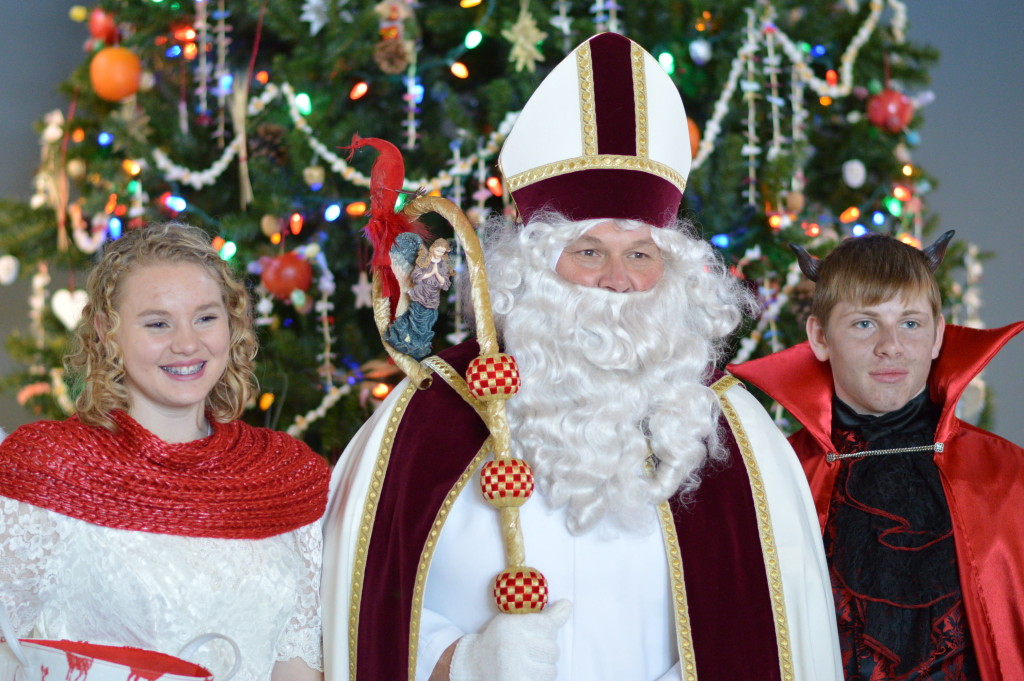
Svatý Mikuláš is celebrated in front of the Christmas tree at the National Czech & Slovak Museum & Library in Cedar Rapids, Iowa. (photo/Cindy Hadish)
By Cindy Hadish/For Radish Magazine
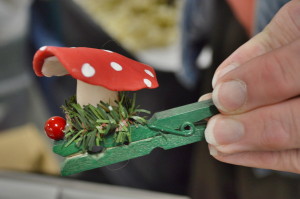
A mushroom ornament is among the collection used for the Christmas tree at the National Czech & Slovak Museum & Library. (photo/Cindy Hadish)
CEDAR RAPIDS — The power of traditions, especially during the holidays, became particularly apparent to Dell Mills during a “Svatý Mikuláš” celebration, a Czech version of St. Nicholas Day.
While a visitor and her daughter enjoyed the event, at the National Czech & Slovak Museum & Library in Cedar Rapids, Mills said, “the mom stood there with tears in her eyes, because she remembered it from her childhood.”
“There are certain things that bind us together,” said Jan Stoffer, the museum’s director of education, noting that holiday customs are among the most popular topics that museum visitors like to discuss.
A focal point of those traditions is an ornament-laden Christmas tree, displayed in the museum’s Rozek Grand Hall.
“A lot of people stand in front of it to have their picture taken,” Stoffer said. “There is a lot of activity that surrounds that tree.”
Mills, a long-time museum volunteer, has been collecting the decorations used on the tree for years and while he has no Czech ancestry, cites what he appreciates about the ornaments: “the interest, the history, the customs and the cultural aspects.”
“All of the ornaments are handmade or donated,” he noted, adding that the items represent those used in homes in what is now the Czech Republic and Slovakia.
The 15-foot artificial tree displayed in the Grand Hall, covered with nearly 800 ornaments for the holiday season, is free to view and open to the public, beginning the week before Thanksgiving and ending Jan. 3.
Some of the decorations include natural materials, such as wheat and walnuts, which would have been readily available for use after harvest, when the holiday preparations would begin.
“You use what you’ve got,” Stoffer said of the pine cones and other natural items, along with clothespins, fabric scraps and other materials used to make the ornaments.
Some objects repurposed as decorations were special to the season.
Oranges, for example, were considered a rare treat, available only during the holidays. The museum uses artificial representations of food, such as apples, oranges and cookies, but, Mills said, “all the ornaments on our tree have meaning.”
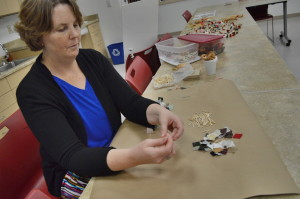
Jan Stoffer demonstrates how to make a handmade fabric Christmas tree garland at the museum. (photo/Cindy Hadish)
A tree representing Slovakia also is displayed inside the museum, and a Czech-American tree is set up in the Sleger immigrant home, next to the main museum.
The one-and-a-half story immigrant house was the home of five generations of the Sleger family, beginning in the 1890s, after they emigrated from Bohemia to the United States.
“Immigrants bring more than what they can fit in a trunk or a suitcase,” Stoffer said. “They bring their knowledge and their traditions.”
Handmade Christmas Tree Garland
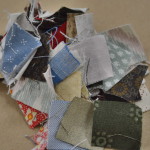 Stoffer said people of all ages have made this garland at the museum, from ages 3 on up to elderly visitors. The garland is traditionally made with straw and fabric squares — both of which would have been readily available at the time this originated — but plastic drinking straws and other material, such as colorful construction paper, can be substituted.
Stoffer said people of all ages have made this garland at the museum, from ages 3 on up to elderly visitors. The garland is traditionally made with straw and fabric squares — both of which would have been readily available at the time this originated — but plastic drinking straws and other material, such as colorful construction paper, can be substituted.
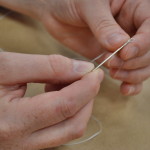 Materials needed: Waxed dental floss; fabric squares; darning needle or other needle; cut straw (can be found online and at craft stores.)
Materials needed: Waxed dental floss; fabric squares; darning needle or other needle; cut straw (can be found online and at craft stores.)
Step 1: Thread the needle with the floss. The waxed floss is strong and does not tangle as easily as thread. Use the cutter on the floss container to cut, rather than scissors.
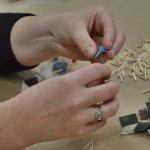 Step 2: Tie a double knot at the end of the floss.
Step 2: Tie a double knot at the end of the floss.
Step 3: Start threading with a piece of fabric.
Step 4: Alternate fabric with a piece of straw and continue.
Step 5: End with a piece of fabric; leave enough floss to tie another knot.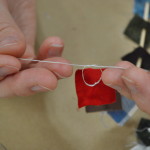
Step 6: Tie a double knot at the other end to finish.
Meanings of ornaments
Following are the traditional interpretations of ornaments used on the Christmas tree at the National Czech & Slovak Museum & Library in Cedar Rapids:
ANGELS – top the tree, closest to heaven;
APPLES – Adam and Eve in the Garden of Eden;
BIRDS – represent joy and cheerfulness;
CARROTS – bring good luck in the kitchen;
DOVES – symbolize peace and love;
MORAVIAN STARS – beginning of Advent;
MUSHROOMS – good fortune is at hand;
ORANGES – fruit at Christmas time used to be unobtainable and was considered a rare treat;
PINECONES and EVERGREENS – eternal life;
POPCORN GARLAND – represents the rope Joseph used to lead the donkey to Bethlehem;
TREE SKIRT – baby Jesus’ swaddling cloth
WALNUTS – gifts brought by the wise men
WHEAT – life, prosperity and nourishment
Find museum hours and more about the National Czech & Slovak Museum & Library at: www.ncsml.org and learn more about healthy living at The Radish Magazine.



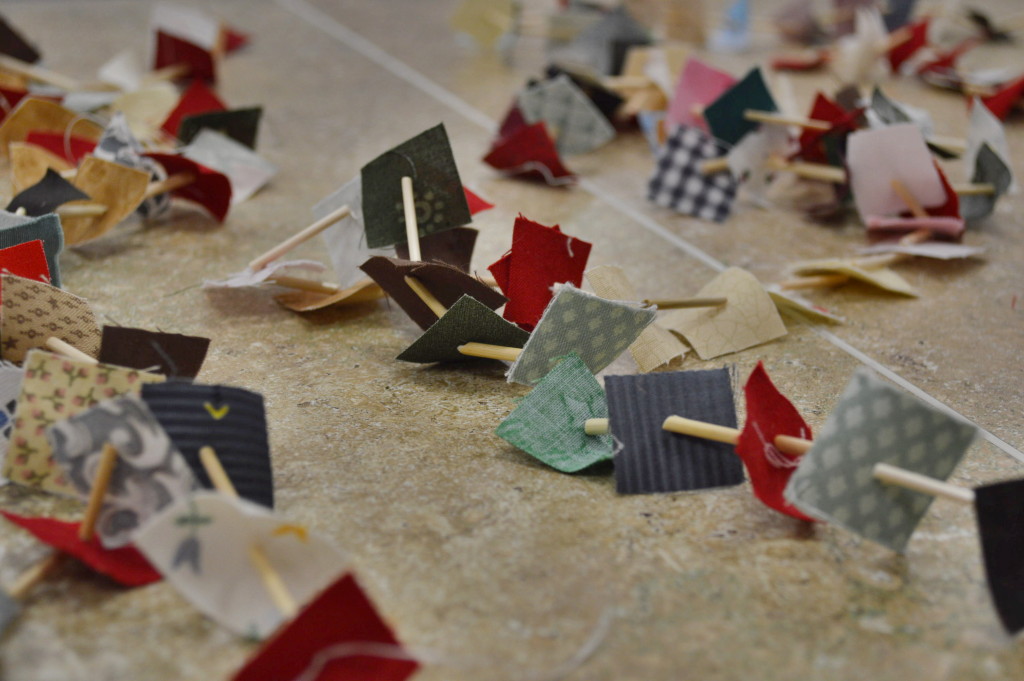

[…] about other Czech holiday traditions and see more photos from the Czech Village […]